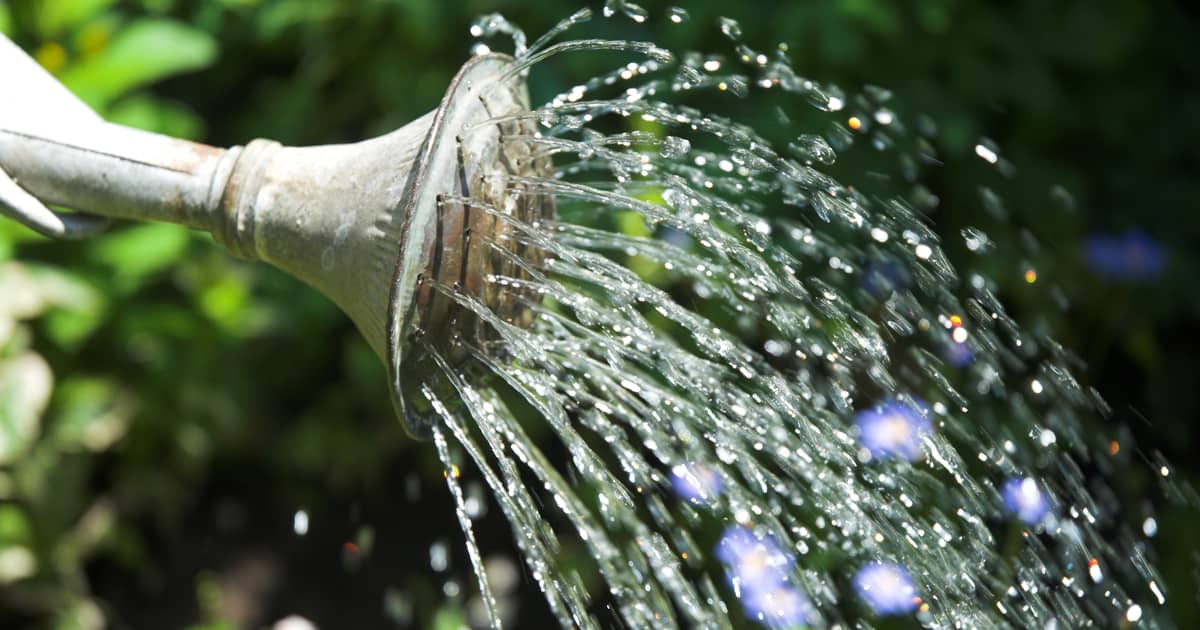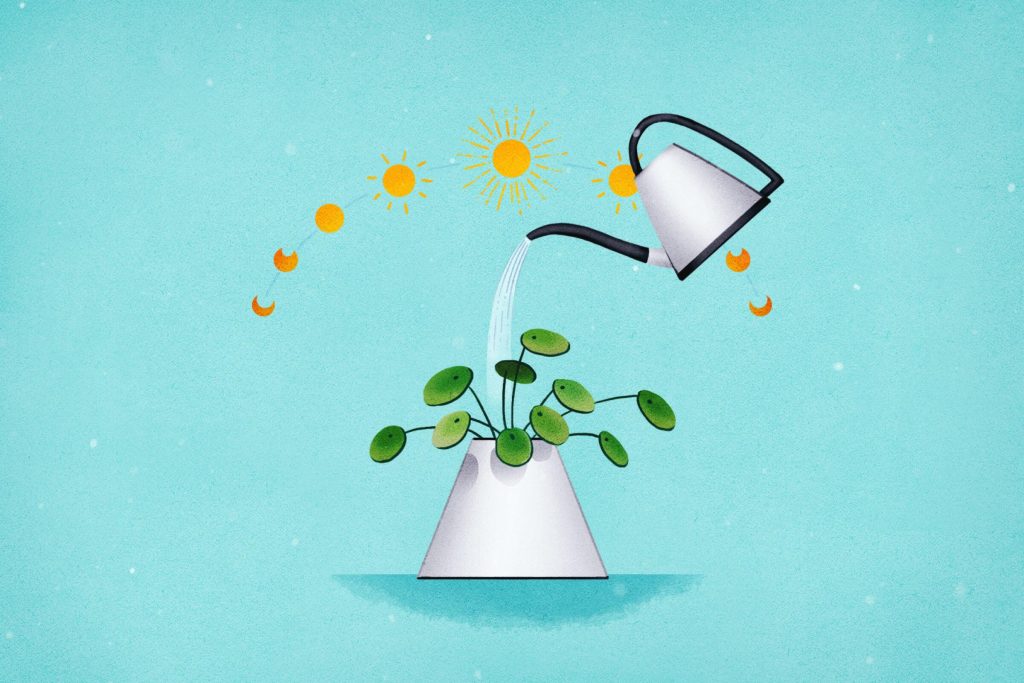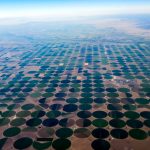Are you tired of seeing your crops wither despite your best efforts? If you’ve ever wondered why some farmers have lush, thriving fields while others struggle, the secret may lie in timing.
Yes, when you water your crops is just as crucial as how much water you give them. Imagine boosting your harvest simply by adjusting your watering schedule. Intrigued? You should be! We’ll explore the best times of day to water your crops, helping you optimize growth and maximize yield.
Let’s dive in and transform your farming success!

Morning Benefits
Watering crops early in the morning helps plants absorb moisture before the sun gets too hot. This timing reduces evaporation, conserving water. Morning watering also minimizes the risk of fungal diseases, as leaves dry quickly in the daylight.
Watering your crops in the morning can be a game-changer for your garden’s productivity. It’s not just about setting an alarm and grabbing the hose; it’s about understanding how the timing can enhance growth and save resources. Morning watering has unique benefits that can make your plants thrive.Why Morning Is Optimal
Morning watering allows your plants to absorb moisture efficiently before the heat of the sun evaporates it. This means your crops get the hydration they need when they need it most. Plus, starting your day with watering can be a peaceful ritual that connects you to your garden’s rhythm.Reducing Water Waste
By watering in the morning, you reduce water waste. The cooler temperatures ensure that less water evaporates compared to midday. This not only saves water but also lowers your water bills. You might wonder, could shifting your schedule really make such a difference? Absolutely.Preventing Disease
Damp leaves overnight can encourage diseases. Morning watering gives leaves time to dry throughout the day, reducing the risk of fungal infections. This simple timing adjustment can be the key to maintaining healthy crops.Personal Experience: A Morning Routine
I once struggled with mildew on my tomato plants, and shifting to morning watering made a world of difference. The dry leaves and healthy growth were proof that timing matters. Have you noticed similar patterns in your garden?Creating A Sustainable Routine
Consider setting an alarm or using automatic timers to make morning watering a habit. A consistent routine helps plants thrive and can simplify your garden care. It’s an easy yet impactful change that can lead to healthier crops. Watering in the morning isn’t just a chore; it’s a strategic move for better growth and resource management. So, why not give it a try and see the benefits for yourself?Afternoon Considerations
Water crops during the late afternoon to reduce evaporation and conserve water. This timing allows plants to absorb moisture effectively. Prevents disease caused by wet leaves overnight.
Watering crops is an essential part of farming, but choosing the right time can greatly impact the health of your plants. Many farmers focus on morning or evening watering, but what about the afternoon? This time of day presents unique challenges and opportunities for your crops. Let’s explore how afternoon watering can be managed effectively.Understanding Afternoon Heat
Afternoon is often the hottest part of the day. The sun is at its peak, and the temperature can rise quickly. This heat can lead to rapid evaporation, meaning your plants might not get the full benefit of the water you provide. Consider using drip irrigation systems, which deliver water directly to the roots, minimizing loss through evaporation.Dealing With Temperature Stress
High afternoon temperatures can stress your plants. Watering during this time might provide temporary relief but can also lead to shock if the water is too cold. Using water that’s been sitting in the sun for a while can help to avoid this shock, as it will be closer to the ambient temperature.Afternoon Watering During Drought
In times of drought, every drop of water counts. Afternoon watering might seem wasteful, but there are situations where it’s necessary, especially if your crops are wilting. Spot watering can be effective; focus on the plants that need it most. This targeted approach helps conserve water.Assessing Your Soil Type
Soil type plays a crucial role in how water is absorbed. Sandy soils drain quickly, which can be a disadvantage in the afternoon heat. Clay soils retain more moisture but can lead to waterlogging if overwatered. Knowing your soil type can help you decide whether afternoon watering is beneficial or not.Personal Experience Insights
I once watered my tomato plants in the afternoon during an unexpected heatwave. I noticed some leaves were getting scorched. The next time, I used a shade cloth to protect them and reduced the water temperature, which helped immensely. Think about your past experiences and what adjustments you can make for better results. What do you think? Could afternoon watering be right for your crops, or do you prefer sticking to the cooler parts of the day? Your choices can make a big difference in the health and yield of your crops.Evening Advantages
The evening can be an ideal time for watering crops. During this time, the sun is not as intense. This reduces the risk of water evaporation. Evening watering helps crops absorb more moisture. It can also prevent diseases that thrive in wet conditions. Here are some key advantages of watering crops in the evening.
Reduced Water Evaporation
Watering in the evening helps reduce evaporation. The cooler temperatures ensure more water reaches the roots. This means less water waste and more hydration for crops. It also ensures that plants receive adequate moisture for growth.
Enhanced Plant Hydration
Evening watering boosts plant hydration. Plants have all night to absorb water. This leads to healthier and stronger plants. It also prepares them for the next day’s heat. Proper hydration helps crops thrive in hot weather.
Less Stress On Plants
Watering in the evening reduces stress on plants. During the day, plants focus on photosynthesis. In the evening, they can focus on absorbing nutrients. This dual focus helps plants grow robustly. It also reduces the risk of wilting during the day.
Decreased Risk Of Fungal Diseases
Evening watering can decrease the risk of fungal diseases. Wet leaves overnight can cause mold and fungus. Watering at dusk allows leaves to dry before nightfall. This reduces the chances of disease outbreaks. Healthy plants are less likely to be affected by fungi.

Nighttime Strategies
Watering crops at night can be a practical strategy. It offers several benefits, especially in hot climates. Nighttime watering reduces evaporation, ensuring more water reaches the roots. This approach can also prevent plant stress from midday heat. Understanding nighttime strategies can improve crop health and yield.
Reduced Evaporation
Nighttime watering minimizes water loss through evaporation. The cooler temperatures at night keep water on the soil longer. This allows plants more time to absorb moisture. It ensures efficient use of water resources.
Avoiding Sun Scald
Watering during the day can lead to sun scald on leaves. Water droplets act like magnifying glasses under the sun. They can damage leaves. Nighttime watering eliminates this risk. It keeps leaves safe from potential sun damage.
Promoting Deep Root Growth
Deep root systems are crucial for plant health. Nighttime watering encourages roots to grow deeper. Moisture stays longer in the soil, reaching lower root zones. This promotes strong and resilient plants.
Reducing Pest Problems
Daytime watering can attract pests. Wet soil and foliage in daylight can invite insects. Nighttime watering reduces this risk. It leaves less surface moisture during active pest hours.
Preventing Fungal Diseases
Watering at night can help prevent fungal diseases. Dry foliage reduces the chance of fungal growth. This practice keeps plants healthier and less prone to infections.

Conclusion
Watering crops at the right time is crucial. Early morning is ideal. It reduces evaporation. Ensures plants absorb moisture. Late afternoon works too. Avoids midday heat. Prevents water loss. Evening watering isn’t best. Can lead to disease. Choose morning or late afternoon.
Your crops will thrive. Healthier and more productive. Remember, timing matters in agriculture. Proper watering improves crop yield. Saves water resources. So, stick to these best times. You’ll see positive results. Happy farming!



